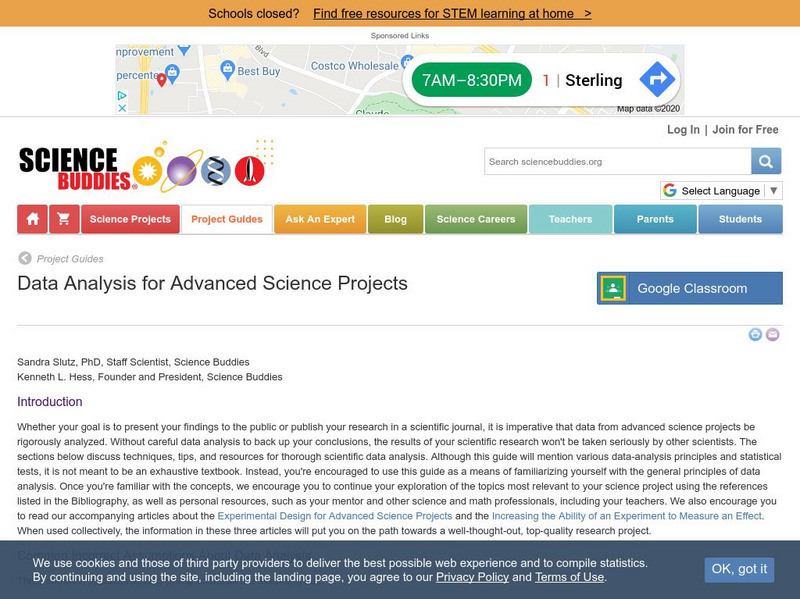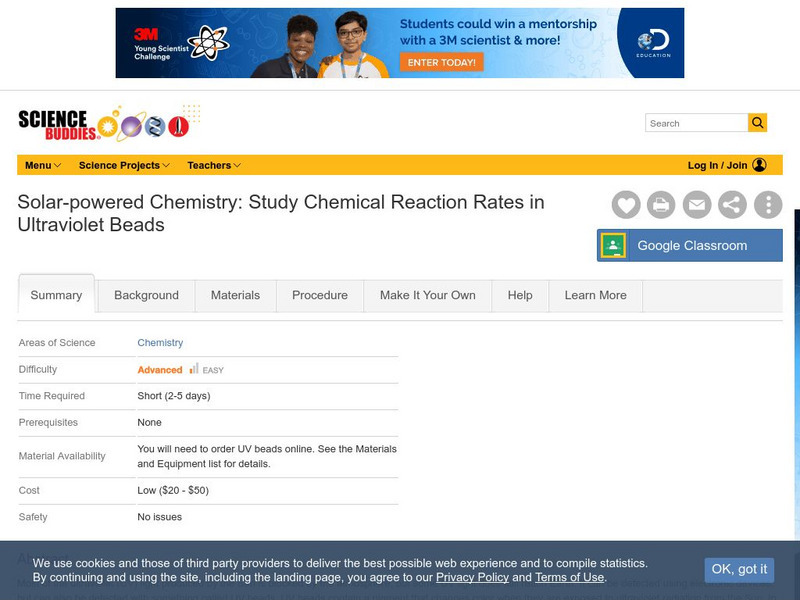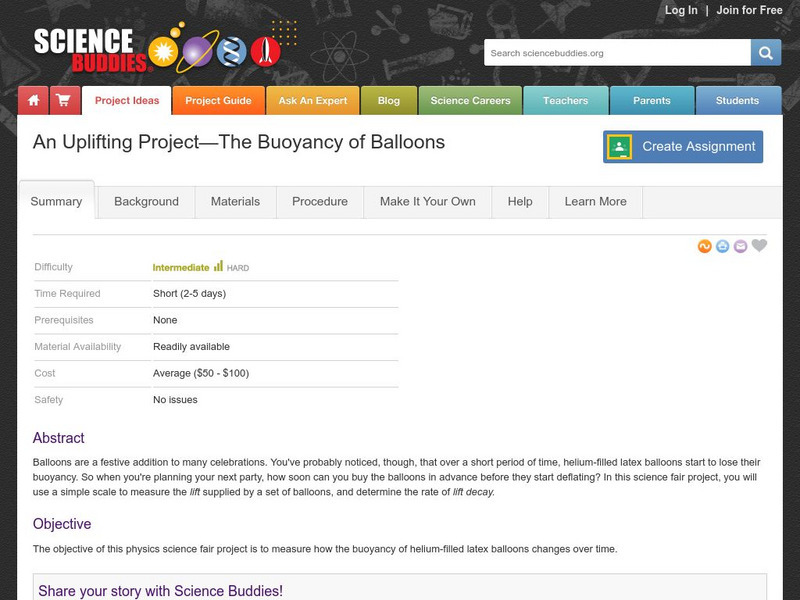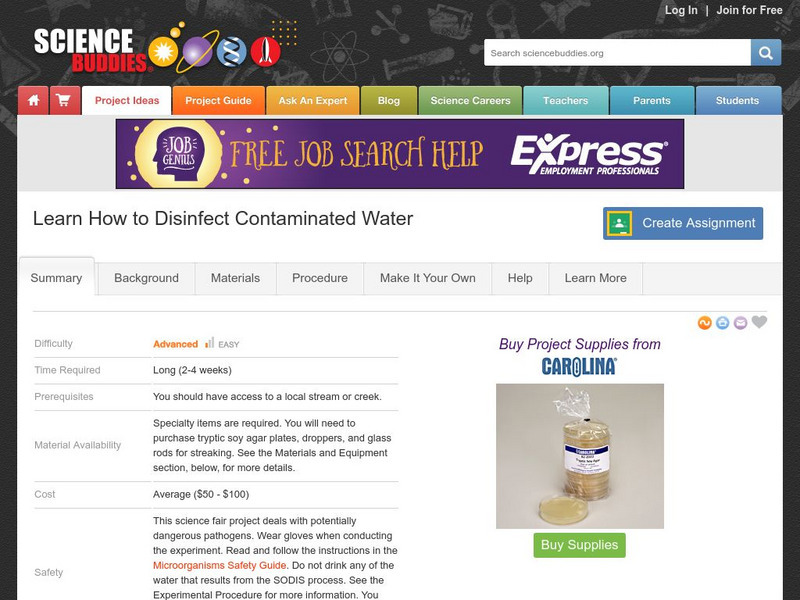Science Buddies
Science Buddies: Solving a 'Windy' Problem
The wind is a powerful force, enough to erode whole hillsides over time. Building structures in windy environments challenge civil engineers with special safety concerns. A wall in a windy area can either shield you from the cold or fall...
Science Buddies
Science Buddies: The Physics of Cheating in Baseball
This week-long project asks you to examine the density of certain materials, such as "corked" baseball bats and regular baseball bats, and whether they can cause a ball to travel different distances.
Science Buddies
Science Buddies: Now You See It, Now You Don't! Test Your Peripheral Vision
The survival of our ancient ancestors depended on their ability to use peripheral vision to find prey and to avoid predators. Almost everything we do-from riding a bike, to dribbling a basketball, to reading a book-depends on peripheral...
Science Buddies
Science Buddies: The Cat's Meow: Designing an Enrichment Toy
A great Science Fair project that involves analyzing your cat's behavior and designing toys that will be stimulating both physically and mentally. The Science Buddies project ideas are set up consistently beginning with an abstract,...
Science Buddies
Science Buddies: Accept a Design Trade Off Challenge Science Projects
Build a device to accomplish a fun task. Accept a design trade-off challenge of using only a set amount of simple materials, as if you were stuck on a desert island, to make your device work.
Science Buddies
Science Buddies: Neanderthals, Orangutans, Lemurs & You; A Primate Reunion
You have probably seen figures showing how human beings are related to chimpanzees, gorillas, and other primates. In this genomics science fair project, you will use bioinformatics tools to generate your own primate family tree.
University of Washington
Univ. Of Washington: Successful Science Far Projects
This competent site features a thorough and detailed description of the steps needed to produce a successful science fair project. Other helpful science fair web pages can be found on this site.
Science Buddies
Science Buddies: Data Analysis for Advanced Science Projects
The importance of data analysis in science projects is explained. Describes common mistakes young scientists make. The article then discusses how to find out what the standard methods of data analysis are for the type of research you...
Science Buddies
Science Buddies: Project Ideas: Chemical Reaction Rate in Ultraviolet Beads
In this science fair project, experiment with the role temperature plays in the rate at which UV beads lose their color. The Science Buddies project ideas are set up consistently beginning with an abstract, objective, and introduction,...
Science Buddies
Science Buddies: An Uplifting Project: The Buoyancy of Balloons
In this science fair project, measure the "lift" of a set of balloons and track how it changes over time as the helium escapes from the balloons. The Science Buddies project ideas are set up consistently beginning with an abstract,...
Science Buddies
Science Buddies: Learn How to Disinfect Contaminated Water
Clean water is not a given everywhere in the world. In this science fair project, students will investigate whether sunlight could be used to disinfect contaminated water. The Science Buddies project ideas are set up consistently...
Science Buddies
Science Buddies: The Case of Mistaken Identity
Mysteries and detective stories have been popular since the time of Sherlock Holmes. The solutions to these fictional cases often involve untangling seemingly contradictory evidence from eyewitnesses. This project studies one procedure...
Science Buddies
Science Buddies: The Effect of Artificial Light on Migration Pattern of Daphnia
This elegant project employs a scientific approach that is particularly valuable in Environmental Science, but can be applied to other areas as well. The approach has three steps: 1) from your observations in the field, form a...
Science Buddies
Science Buddies:from Your John to the School Lawn:is Recycled Water Really Safe?
Find out whether reclaimed water is really safe by following the guidelines of the Science Buddies project.
Science Buddies
Science Buddies:testing Compression Waves
Here's a project for studying compression waves in different soil types. It uses a homemade wave tank for solids, with a frequency generator, amplifier, and loudspeaker as the vibration source. There are lots of interesting possibilities...
Science Buddies
Science Buddies: Solubility of Proteins
Some proteins are soluble in aqueous solutions and some are not. Insoluble proteins can be a problem because the proteins can form large aggregates in solution which are difficult to purify, crystallize, and use in experiments. Compare...
Science Buddies
Science Buddies: Hey Gear Heads! The Physics of Bicycle Gear Ratios
Here's an abstract of a project from Science Buddies that asks you to experiment with bicycle gears and the circumference of the wheel to determine revolutions per minute.
Science Buddies
Science Buddies: Chain Reaction: Inversion and the Pappus Chain Theorem
Here is a challenging problem for anyone with an interest in geometry. This project requires background research to solve it, but it is an excellent illustration of visual thinking in mathematics.
Science Buddies
Science Buddies: Growing, Growing, Gone! An Experiment on Nitrogen Fertilizers
Plants need nitrogen to build proteins and nucleic acids to grow healthy stems and leaves. Though the Earth's atmosphere is made up of 79% nitrogen, the form of nitrogen found in the atmosphere cannot be used by plants. In this...
Science Buddies
Science Buddies: Measuring Speed of Moving Objects With Stroboscopic Photography
A strobe light can illuminate an entire room in just tens of microseconds. Inexpensive strobe lights can flash up to 10 or 20 times per second. This project shows you how to use stroboscopic photography to analyze motion.
Science Buddies
Science Buddies: Ozone Depletion
The ozone layer is important for blocking most of the harmful radiation that comes from the sun. You can find maps of the ozone layer and compare different regions of the globe for ozone coverage. Some scientists think that aerosols in...
Science Buddies
Science Buddies: Porosity
Soils are made of particles of different types and sizes. The space between particles is called pore space. Pore space determines the amount of water that a given volume of soil can hold. Porosity is the percentage of the total volume of...
Science Buddies
Science Buddies: Composting and Vermiculture
Make your own fertile soil using kitchen scraps, manure, leaves, grass clippings, and other compostable materials. Which materials make the best compost?
Science Buddies
Science Buddies: Measuring Velocity With a Video Camera
A video camera records 30 "frames" or distinct images per second. (That's for an NTSC camera in the U.S. PAL cameras in other areas of the world take 25 frames per second.) You can use this fact to time events and measure velocity. One...























